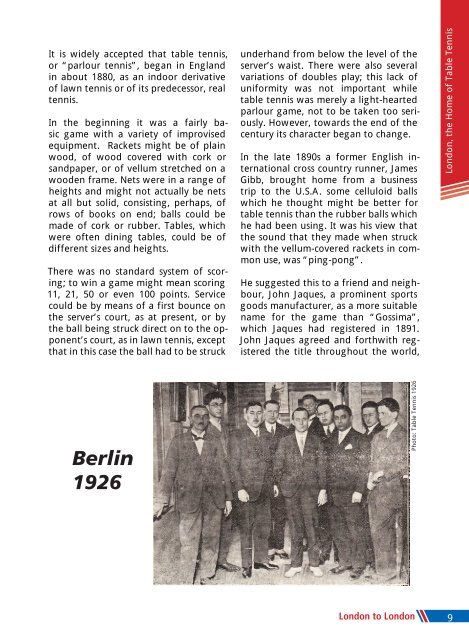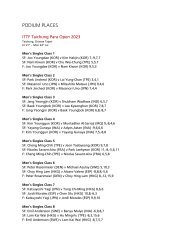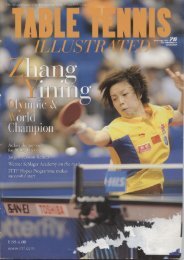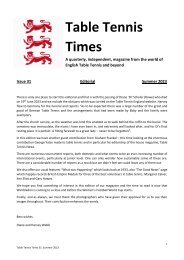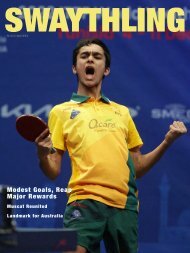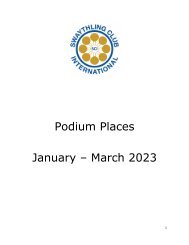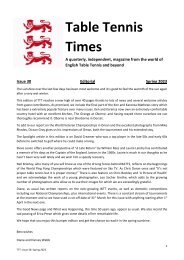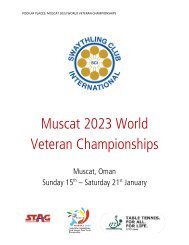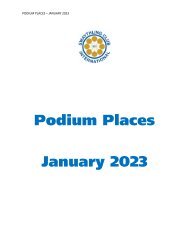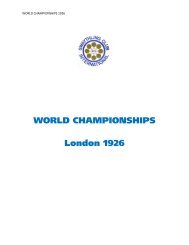Create successful ePaper yourself
Turn your PDF publications into a flip-book with our unique Google optimized e-Paper software.
It is widely accepted that table tennis,<br />
or “parlour tennis”, began in England<br />
in about 1880, as an indoor derivative<br />
of lawn tennis or of its predecessor, real<br />
tennis.<br />
In the beginning it was a fairly basic<br />
game with a variety of improvised<br />
equipment. Rackets might be of plain<br />
wood, of wood covered with cork or<br />
sandpaper, or of vellum stretched on a<br />
wooden frame. Nets were in a range of<br />
heights and might not actually be nets<br />
at all but solid, consisting, perhaps, of<br />
rows of books on end; balls could be<br />
made of cork or rubber. Tables, which<br />
were often dining tables, could be of<br />
different sizes and heights.<br />
There was no standard system of scoring;<br />
<strong>to</strong> win a game might mean scoring<br />
11, 21, 50 or even 100 points. Service<br />
could be by means of a first bounce on<br />
the server’s court, as at present, or by<br />
the ball being struck direct on <strong>to</strong> the opponent’s<br />
court, as in lawn tennis, except<br />
that in this case the ball had <strong>to</strong> be struck<br />
underhand from below the level of the<br />
server’s waist. There were also several<br />
variations of doubles play; this lack of<br />
uniformity was not important while<br />
table tennis was merely a light-hearted<br />
parlour game, not <strong>to</strong> be taken <strong>to</strong>o seriously.<br />
However, <strong>to</strong>wards the end of the<br />
century its character began <strong>to</strong> change.<br />
In the late 1890s a former English international<br />
cross country runner, James<br />
Gibb, brought home from a business<br />
trip <strong>to</strong> the U.S.A. some celluloid balls<br />
which he thought might be better for<br />
table tennis than the rubber balls which<br />
he had been using. It was his view that<br />
the sound that they made when struck<br />
with the vellum-covered rackets in common<br />
use, was “ping-pong”.<br />
He suggested this <strong>to</strong> a friend and neighbour,<br />
John Jaques, a prominent sports<br />
goods manufacturer, as a more suitable<br />
name for the game than “Gossima”,<br />
which Jaques had registered in 1891.<br />
John Jaques agreed and forthwith registered<br />
the title throughout the world,<br />
<strong>London</strong>, the Home of Table Tennis<br />
Berlin<br />
1926<br />
Pho<strong>to</strong>: Table Tennis 1926<br />
<strong>London</strong> <strong>to</strong> <strong>London</strong> 9


